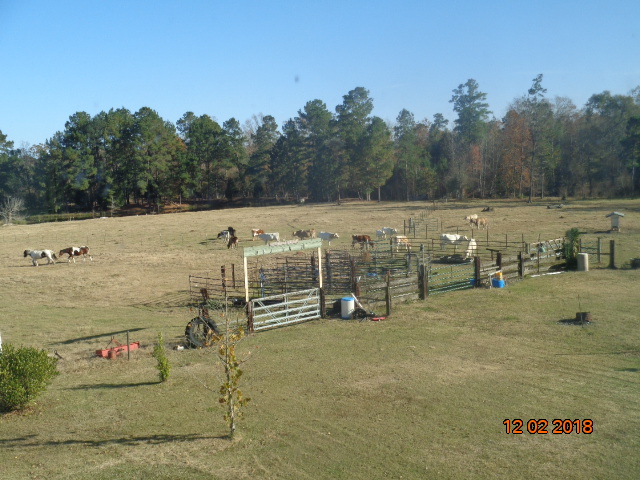Addie
Chef Extraordinaire
People are so cynical these days.
And most often with good reason.
People are so cynical these days.
I did the same thing several years ago and had the opposite experience. The grass-fed beef didn't seem to have much flavor. Grade, aging and proper cooking seem to affect flavor much more, imo.Obviously taste is a personal preference and I will never going to argue with anybody about taste.
But few years ago I was introduced to free range, pasture grass fed beef. I found the taste so much more pleasant, so much more flavorful compared to corn fed cows. Absolutely no comparing. I now only search for grass fed meat. To the point that I try to avoid meat produced from corn fed animals. Same goes with chicken.
One day I was watching a piece regarding how our food is made. I already knew that corn was not on the menu for cattle. They are grazers. When they are rounded up off the range and loaded to be shipped to the feed lots. Corn IS NOT a natural food for them. They only are fed it to fatten them up quickly and then shipped off to slaughter.
For the first or couple of days they spend in the feed lots, they refuse to eat. It is only when they become starving, will they wander over to the troughs that have the kernels of corn in them.
And BTW, there is a world of difference between the corn that is sold to the public for eating and what is grown and fed to cattle for fattening. Even humans wouldn't eat what they are given.
...
And BTW, there is a world of difference between the corn that is sold to the public for eating and what is grown and fed to cattle for fattening. Even humans wouldn't eat what they are given.
Livestock is fed dent corn, also known as field corn, and there is a big difference between dent corn and sweet corn.GotGarlic said:Of course there is a difference. Their digestive systems, including four stomachs, process grass and other forage differently from ours - they very efficiently turn carbs into protein. So they're putting on weight in a feedlot, but it's not fat.
I believe you're right. When we were in Ireland in 200ě, the pork was much more fatty and tasted very good. Funny thing was that we saw flocks of sheep roaming everywhere, but I never saw any pigs [emoji848]
I did the same thing several years ago and had the opposite experience. The grass-fed beef didn't seem to have much flavor. Grade, aging and proper cooking seem to affect flavor much more, imo.
It's been bugging me that this misinformation has been sitting here unanswered, sooo...
There are a lot of "documentaries" out there these days that are just propaganda and are are as unreliable as some nutrition sites. Be careful what you believe.
It's not true at all that cattle won't eat corn unless they're starving, nor is true that they get only corn in a feedlot, nor is it true that they get corn kernels. Producing cattle feed is a precise science. People seem to think that corn-fed cattle are raised for their entire lives on corn, but that's not the case.
https://beefrunner.com/2012/09/27/ask-a-farmer-does-feeding-corn-harm-cattle/
Of course there is a difference. Their digestive systems, including four stomachs, process grass and other forage differently from ours - they very efficiently turn carbs into protein. So they're putting on weight in a feedlot, but it's not fat.
Yes, this.In several polls, Americans preferred corn finished beef to grass finished. I prefer grass finished beef, and a lot of that has to do with the fact that I have been to a couple of Texas feed lots. The animals live in mud and feces, and eat corn, which cattle were not designed to eat.
Keep in mind, all cattle start out grass fed. They get sent to feed lots to eat corn and gain weight when they are close to slaughter age. So, "grass fed" doesn't mean that all the cattle ate was grass, unless the rancher specifically says so. Nolan Ryan says, point blank, "Cattle raised exclusively on a grass diet, never receiving any grain."
I love a good steak. But, I also want to know that the animal who died for my dinner had a decent, humane life.
CD
"You're wrong!" "No, you're wrong!" [emoji38]Well, once again, in your compulsion to correct Addie, you got it all wrong.
Cattle feedlots are horrible places. You can post links to websites that support your arguments, but I've actually been to some. Real life experience. The cattle are living in mud and feces. They get pumped full of antibiotics just to keep them alive long enough to gain weight, so the owners can get more money from them. And yes, it is almost all fat!
I wish I could take you to one. The stench is overwhelming. Imagine an outhouse in July, that has never been cleaned. Then, double that.
The cattle eat corn, which they were not meant to eat, because that is what is available to them. Again, it is all about fattening them up.
We have a lot of corporate chicken farms here in NE Texas, too. I can't describe the smell from those. Imagine an outhouse full of s--t and ammonia. Double that. You can drive past one by 500 yards, and have to roll up the car windows.
CD

